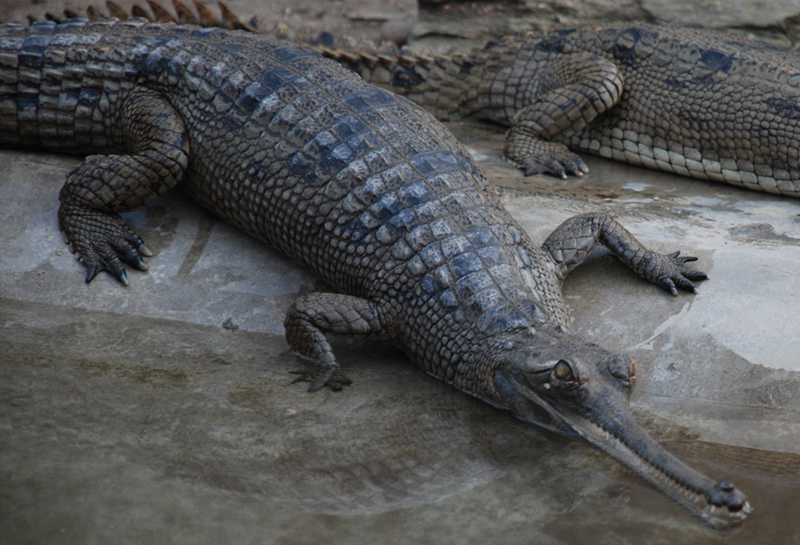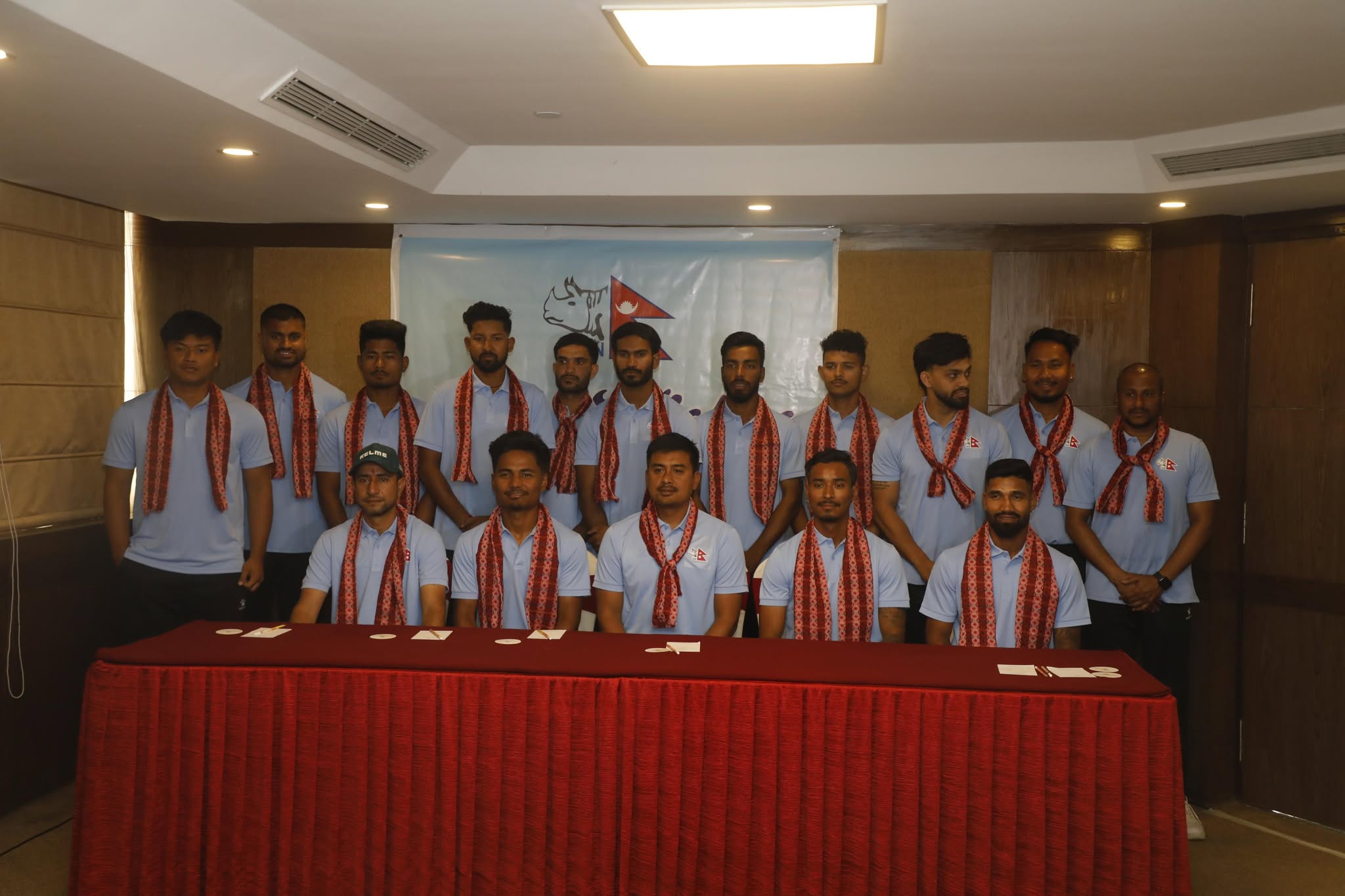
The gharial (Gavialis gangeticus) is the rarest crocodile species. Both ICUN Red List and CITES list gharials as critically endangered. Nonetheless, there have been several efforts to conserve gharials in Nepal. They are one of the protected reptiles of Nepal under Schedule I of the National Parks and Wildlife Conservation Act, of 1973.
Being a freshwater species, the climate-induced impacts can be a possible threat to gharials in Nepal as well as elsewhere as they might have a direct effect on water resources. Besides this, pollution from industrial toxic wastes, domestic sewage and natural habitat modification due to monsoon flash floods are also highlighted as threats to gharials and their habitat in the country.
Yet, thanks to conservation at different levels, hope for the future of this species in this country is still alive.
Habitation and characteristics of gharials
Gharials are considered keystone species of healthy freshwater ecosystems due to the role they play in maintaining the ecosystem. They are the last surviving members of the well-represented family Gavialidae, genus Gavialis and fall within the order Crocodilia.
Gharials are often seen in and around fast-flowing rivers. They come to land to bask in the sunlight and build their nest. The lifespan of a gharial is 40 to 50 years. Its body colour is slightly black.
Male gharials develop a hollow bulbous nasal protuberance at the tip of the snout upon reaching sexual maturity. This protuberance resembles an earthen pot known locally as ghara, which gives gharial its name and also helps in easy identification from other crocodilians. Male gharial is of 6 m to 8 m and female gharial is 4 m to 5 m long. The weight of a gharial is about 159 kg to 181 kg. It eats only fresh fish.
The incubation period is about 60 to 80 days. As in other crocodiles, the gender of the offspring is controlled by temperature during incubation. Lower incubation temperatures favour the production of females.
Like all crocodilians, the gharial is a very proficient swimmer with webbed hind feet and a laterally flattened tail, which provides superior flexibility providing a vital role in capturing fish or its preferred prey.
The gharial has weak legs compared to other crocodilians and because of this reason, the adult gharial when on land is unable to lift its belly and has to drag itself over the ground.
Gharials in Nepal

Until the 1940s, gharials were widely distributed in the major river systems from the Indus river in Pakistan in the west to the Gangetic flood plains of India, Nepal, Bangladesh, and Bhutan, and to Irrawaddy in Myanmar in the east.
The gharial population was estimated from 5,000 to 10,000 during that period. But since the 1940s, or in just three generations, there has been about a 96 per cent decline in the gharial population (Whitaker and Daniel 1978, Maskey 1989, Choudhury et al. 2007). By the mid-1970s, the species became limited to only two per cent of its historical range and was pushed to the verge of extinction. Currently, it is only found in India and Nepal where it breeds.
The core population of gharials in Nepal is confined only to Rapti and Narayani rivers in Chitwan National Park and Babai and Karnali rivers in Bardia National Park. First, they were in the Narayani and later introduced to other rivers.
In addition, Gharials have also been reported seasonally from the Mohana river in the Kailali district, and the Reu, Khageri and Budhi Rapti rivers in Chitwan.
Historically, gharials were distributed across all the major river systems of Nepal—Koshi, Gandaki, Karnali and Mahakali. But, now, gharials in Nepal are rare because of heavy habitat loss, water pollution and poaching of eggs. They are traded in national and international markets for their skin.
Gharial conservation in Nepal
The Gharial Conservation Action Plan (2018- 2022) has been prepared to maintain and manage the viable population of gharials in Nepal. This action plan addresses the threats and challenges including the impacts of climate change and various developmental activities. Now, it is time to assess its impact.
Also, in an initiative to save gharials in Nepal, the Gharial Breeding Centre was established in Nepal. Nepal’s gharial conservation breeding programme began in 1978 and has made significant contributions to the revival of gharials in the rivers of Nepal. This programme has been successful in hatching, rearing and releasing gharials in the main rivers of the country to enhance the remnant population of the species in the wild.
The National Trust of Nature Conservation’s Biodiversity Conservation Centre supports the government in the management of the breeding centre.
Nepal has reintroduced over 1,240 captive-bred gharials since 1981 and given several gharials to international crocodile breeding centres like Atagwa Alligator Garden in Japan and La-Forme aux Crocodiles in France for promoting ex-situ conservation of the species.
Presently, there are 198 gharials in Nepal—84 in the Narayani river, 82 in the Rapti river, 31 in Babai and one in the Karnali river. However, high hatchling mortality in captivity is one of the key challenges in the centre.
Major threats to gharials in Nepal

Dams and barrages have always been major threats to the conservation of gharials in Nepal as they stop the free movement of the species in the river. Sand mining is another major threat to gharials as it removes critical riverside substrates used for nesting.
Besides this, pollution from industrial toxic wastes, domestic sewage and natural habitat modification due to monsoon flash floods are also highlighted as threats to gharials and their habitat.
Another threat to gharials in Nepal is the use of fishing nets. Nowadays, legal and illegal net fishing especially with monofilament gill nets has intensified in large rivers, which results in an increasing number of gharial entrapment. In Chitwan, once, one of the few resident adult breeding males was caught and drowned in a fishing net. Young animals are more likely to be caught in nets, and either drown or are killed or injured deliberately or accidentally. However, older gharial appears to be net savvy and are able to avoid nets.
Moreover, habitat loss and degradation and prey depletion are other threats to gharials in Nepal. However, with the increasing estimated number of gharials from 102 in 2011 to 198 in 2016, there are hope and enthusiasm for conserving this endangered species.
All the possible threats should be reconsidered by engaging local communities in gharial conservation along with rigorous enforcement of wetlands laws and regulations. It should be the agenda of the government to launch initiatives and pass policies that address the conservation of gharials.






















